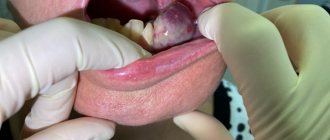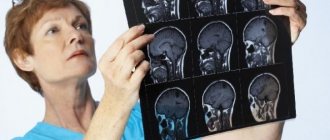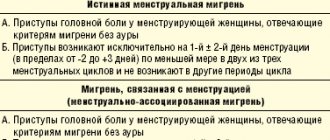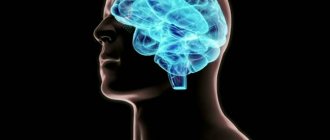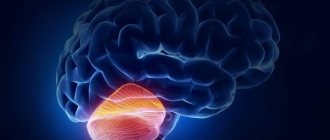The combination of headache and weakness, which may include a feeling of lack of energy, the need to exert great effort to perform normal activities, drowsiness, or muscle weakness, is very common. This can accompany quite a lot of different types of disorders, but it can also indicate overwork and the need to change lifestyle. Doctors are helped to differentiate between pathology and relatively safe conditions not only by the results of laboratory and instrumental diagnostic methods, but also by the characteristics of accompanying symptoms.
Norms and benefits of sleep
Adequate sleep is a relative concept. Traditionally it is believed that the normal duration of night rest is 8-9 hours. But there are people who feel great with 4-5 hours of sleep a day and even with a three-hour rest. Therefore, you need to focus only on your feelings and the needs of the body. If you want to sleep at least 12 hours, it means:
- This is the rhythm that suits a particular person;
- You shouldn’t fit yourself into the generally accepted framework.
Somnologists deal with issues of periodic lack of sleep and chronic lack of sleep. They:
- determine the cause of the problem;
- her character;
- developing effective treatment.
First of all, somnologists strongly recommend that you pay attention to sleep disorders. Because during the period of night rest, very important processes occur in the body:
- active production of serotonin, which is responsible for growth and development;
- strengthening the immune system;
- renewal of tissues and cells;
- restoration of mental functions.
Subsequently, it is impossible to artificially compensate for the lack of sleep.
Diagnostics
A general practitioner will determine the cause of mild dizziness. If necessary, psychiatrists, neurologists, and endocrinologists are involved in the examination. During the interview, the specialist determines the time of occurrence of the symptom and the accompanying circumstances. Identifies living conditions, features of the daily routine and other factors that can provoke physiological disorders. Determines the presence of diagnosed somatic pathologies.
During the examination, the doctor pays attention to external changes that may indicate the nature of the disease causing dizziness, for example, pale and dry skin with anemia or swelling with hypothyroidism. The examination plan is drawn up taking into account the suspected cause of the symptom and may include:
- Visualization techniques
. For osteochondrosis, radiography and CT of the cervical spine are informative. For patients with atherosclerosis, ultrasound examination or MRI of cerebral vessels is indicated. Sonography helps assess the condition of the thyroid gland in patients with hypothyroidism. In addition, ultrasound and radiation diagnostic methods are used to exclude other pathologies in VSD and arterial hypotension. - Electrophysiological studies
. ECG is a screening diagnostic method that allows you to detect arrhythmias, hypokalemia, ischemia and organic changes in the myocardium. It is carried out as part of differential diagnosis to determine the causes of secondary hypotension. EEG is included in the basic examination program for dizziness and makes it possible to identify disturbances in the functioning of the central nervous system. - Lab tests
. Anemia is confirmed by the results of a clinical blood test. In diabetes mellitus, glucose levels are determined. To assess the severity of hypothyroidism, a thyroid hormone test is prescribed. To identify viruses that cause acute infections, PCR and ELISA are performed.
Neurological examination
Lack of sleep and its causes
Lack of time tops the list of reasons. Of course, modern man is in a hurry and does not have time to do anything. As a result, even in the evening he cannot relax, trying to:
- do the work taken home;
- watch movies;
- scroll through social networks and more.
As a result, the correct rhythm gets lost and a person begins to fall asleep only late at night - at 2-3 o’clock. The negative consequences of such a schedule will not be long in coming.
Somnologists note that another cause of insomnia is an incorrect approach to organizing sleep. To fall asleep quickly and deeply, you need to:
- 2-3 hours before, turn off the TV, put aside smartphones;
- ventilate the room;
- first turn off the bright lights, leaving 1 night light or source of diffused light;
- lower the blackout curtains.
Doctors also recommend removing any flashing light sources from the bedroom.
Of course, the factors listed are not the only ones on the list of reasons that have a negative impact on falling asleep. This also includes:
- stress;
- anxiety syndrome;
- nervous disorders;
- pregnancy;
- depression.
As a result, lack of sleep becomes chronic.
Symptoms
Lack of night rest manifests itself in different ways. For some young people, it is not noticeable at all - they spend nights without sleep, and go to school or work in the morning. And at the same time they feel great.
But somnologists say that this feeling is deceptive. A young body has great resources to recover as quickly as possible. And until a certain time, violations do not make themselves felt. But you shouldn’t relax - against the background of chronic lack of sleep, any strong stress can be decisive. And as a result, all the accumulated fatigue will manifest itself in one moment.
Lack of sleep clearly manifests itself at the following levels:
- physical;
- mental.
The first group of symptoms includes the following:
- increased pallor;
- pronounced circles under the eyes;
- headaches, including migraines;
- dizziness;
- redness of the whites of the eyes;
- nausea (sometimes the symptom is accompanied by a strong urge to vomit);
- high blood pressure;
- high body temperature.
But along with the listed symptoms, other signs may be present:
- irritability;
- short-term loss from reality;
- anxiety;
- reduced productivity;
- tendency to procrastination;
- anxiety;
- despondency and tendency to become depressed;
- slow reactions;
- inability to think correctly;
- problems with decision making.
To summarize, it should be noted that sleep disturbances resemble a flu-like condition - a malaise that manifests itself in various areas and reduces the quality of life.
Causes of weakness and headaches
Often such conditions are caused by improper daily routine and high stress, which together does not give the body the opportunity to fully recover. Therefore, people who do not allow themselves normal rest and continuous sleep for 7-9 hours often experience increased fatigue, frequent headaches, drowsiness and irritability. In such cases, a certain pattern is observed: drowsiness during the day and difficulty falling asleep at night.
But this cannot be ignored and considered a variant of the norm, since with a long stay in such a stressful state for the body, chronic fatigue syndrome can develop, which you will no longer be able to cope with on your own, and the treatment will be quite long. Therefore, in case of headaches or increased fatigue that occur against the background of increased stress, it is important to immediately review your daily routine and adjust it so as to provide the body with the opportunity to recover. Sometimes this requires delegating some of your tasks to other people or even changing your type of activity.
Headache is also called cephalgia.
Also, a headache can occur in combination with weakness and for other relatively harmless reasons:
- decreased blood glucose levels due to a low-carbohydrate diet;
- changes in hormonal levels in women during pregnancy or before the onset of menstruation;
- dehydration, which is especially typical for various types of poisoning, accompanied by nausea and vomiting;
- taking certain medications, in particular antihypertensives and diuretics.
In such cases, it is worth considering such a condition as temporary and not causing serious concern. Nevertheless, it is necessary to take measures to eliminate the causes of weakness: increase the amount of carbohydrates and fluids consumed, discuss with your doctor the possibility of changing the prescribed drug, etc.
There is often a headache and weakness due to acute respiratory infections, including infection with COVID-19. But usually this is accompanied by other characteristic symptoms in the form of fever, cough, sore throat, etc., which are familiar to everyone.
Apart from respiratory infections, the most common causes of headaches and weakness are:
- migraine;
- VSD;
- pathologies of the cervical spine;
- fibromyalgia;
- diseases of the cardiovascular system;
- anemia;
- thyroid dysfunction.
Migraine
Migraines are a serious problem of the 21st century. According to statistics, about 12% of people around the world suffer from them, and the debilitating headaches that are characteristic of them deprive a person of their ability to work for a long time.
Attacks are usually accompanied by:
- unilateral, much less often bilateral, throbbing headaches, concentrated in the forehead, temples, around the eyes and tend to intensify with time and with stress (the side of the pain may change from attack to attack);
- nausea and vomiting due to reflex irritation of the corresponding center of the brain;
- increased sensitivity to light and sounds;
- severe general weakness;
- decreased appetite.
WHO included migraine in the list of 19 diseases that most significantly reduce the social adaptation of patients.
In some patients, several hours or even days before the onset of an attack, a so-called prodrome is observed, which consists in the appearance of a complex of precursors. This could be weakness, difficulty concentrating, or, conversely, an increase in activity and appetite. This is often accompanied by a feeling of tension in the neck muscles, increased sensitivity to light, sound and olfactory stimuli.
There are 2 main types of migraine: simple and with aura. An aura refers to a complex of neurological symptoms that precede a headache attack. They can be very diverse, on the basis of which they distinguish between visual, hemiparesthetic aura, etc. Visual aura is more often observed, which is characterized by the development of various types of visual impairments:
- unilateral loss of visual fields;
- flickering of flies before the eyes;
- the appearance of flickering luminous lines.
The aura should not be confused with the prodrome. The latter occurs no more than an hour before the development of cephalalgia and completely disappears with the onset of pain in the head.
After the end of the attack, which can last 3-4 hours or several days, patients experience fatigue and drowsiness. In women, migraine attacks are often associated with the menstrual cycle and are not accompanied by an aura. But in any case, the presence of migraine requires consultation with a neurologist, since it greatly reduces the quality of life and can lead to severe depression and other psychological complications.
VSD
The term “vegetative-vascular dystonia,” although outdated, is still often used by neurologists to describe disturbances in the functioning of the autonomic nervous system, leading to changes in the functioning of the body. They are a consequence of somatic or neurological diseases and are not independent. Thus, VSD is a collective concept that describes the clinical picture, but does not indicate the cause of the development of undesirable symptoms. Therefore, when diagnosing it, further examination is required in order to discover the true causes of the disturbance in well-being.
VSD is characterized by a large complex of symptoms:
- headaches of varying nature, strength and duration, including migraines;
- attacks of dizziness, darkening of the eyes with the risk of loss of consciousness;
- increased fatigue, weakness, drowsiness;
- increased heart rate;
- fluctuations in body temperature;
- mood swings, increased anxiety, irritability, panic attacks;
- noise in ears;
- increased sweating.
Based on which of them predominate, different types of VSD are distinguished. In particular, headaches, severe weakness, and dizziness are characteristic of cerebrovascular syndrome. This is often accompanied by nausea, noise in the head, and presyncope. Most often, this occurs against the background of fluctuations in blood pressure, spasm of blood vessels and other disorders.
Also, general weakness and decreased performance are characteristic of asthenic syndrome. But in this case, they will predominate in the clinical picture, and headaches will occur less frequently and be less pronounced. Asthenia is also characterized by a decrease in the speed of thinking, sudden changes in mood, disturbances in the functioning of the cardiovascular system and gastrointestinal tract.
VSD is diagnosed twice as often in women, and the first attacks are observed at a fairly young age - up to 25 years, including in children.
The presence of VSD is a risk factor for the development of cardiovascular, endocrine and other complications, in particular hypertension, diabetes mellitus, as well as vegetative crisis. It is a strong, sudden onset attack, accompanied by numerous autonomic disorders and a panic attack. In such cases, you may experience:
- severe increase in headache;
- increase or decrease in blood pressure;
- coldness, numbness of the extremities;
- pale skin or, conversely, a feeling of heat, redness of the face;
- nausea;
- increased frequency of bowel movements;
- suffocation.
A panic attack is a pronounced emotional reaction to a stressful situation, accompanied by the active release into the blood of a number of hormones and other biologically active substances aimed at mobilizing strength to overcome the impending threat. This leads to excessive stimulation of the autonomic nervous system, which provokes the emergence of irrational fear, which in turn further increases the release of hormones into the blood. This creates a vicious circle that is difficult to break. Therefore, if symptoms of VSD occur, it is important not to delay contacting a neurologist.
Pathologies of the cervical spine
It is disorders in the cervical spine that are very often accompanied by weakness and cephalgia, since important blood vessels, the vertebral arteries, pass through it. They are responsible for adequate nutrition of the brain, and therefore, when they are compressed by displaced vertebrae or other structures, the blood supply to the brain is disrupted. This leads to the development of ischemia of its tissues, which is accompanied by headaches, weakness and a number of other symptoms. These include:
- displacement of the first cervical vertebra (atlas), which is usually a consequence of injuries, especially those received in an accident;
- osteochondrosis;
- protrusion and hernia.
Very often today, people of different ages, gender, and social status are diagnosed with osteochondrosis, as well as its complications - protrusions and intervertebral hernias. These diseases are characterized by the occurrence of degenerative-dystrophic changes in the intervertebral discs separating the vertebrae. As a result, their height decreases, which leads to the convergence of the vertebrae and the creation of preconditions for their infringement of the spinal roots passing right there.
Without treatment, degenerative-dystrophic changes in the discs progress, and over time, protrusion is formed - protrusion of part of the disc outward. It tends to gradually increase in size, and subsequently transform into an intervertebral hernia. In such cases, the risk of nerve root compression increases dramatically.
Also, osteochondrosis and its complications are accompanied by the formation of osteochondral growths – osteophytes – on the surface of the vertebral bodies. They can reach large sizes and, like hernias, mechanically compress the vertebral arteries, which will lead to weakness and headaches. In this case, cephalalgia is one of the main symptoms of osteochondrosis of the cervical spine, even in the absence of damage to the vertebral arteries.
Other symptoms of cervical osteochondrosis are:
- crunching in the neck when bending or turning the head;
- pain in the neck, radiating to the back of the head, arms;
- reflex spasm of the neck muscles, increasing pain;
- mobility restrictions;
- sensory disturbances in various areas of the upper extremities, back of the head, neck;
- difficulties with swallowing, etc.
The disease cannot go away on its own. It is characterized by periods of exacerbation and remission, but it constantly progresses, and in advanced cases requires surgery to remove large hernias. Therefore, when its symptoms appear, you should immediately contact a neurologist.
Fibromyalgia
Fibromyalgia is a disease accompanied by chronic pain in the musculoskeletal structures, increased fatigue and diffuse tension headaches. Its additional symptoms are:
- stiffness of movement, increasing during physical activity;
- digestive disorders;
- sleep disorders;
- increased level of anxiety, nervous tension;
- deterioration of cognitive functions, especially concentration.
Most often, fibromyalgia is diagnosed in women 35-55 years old.
Diseases of the cardiovascular system
Weakness and headache are frequent companions to pathologies of the heart and blood vessels. Often similar symptoms are observed in patients with high and low blood pressure. In the first case, we are talking about hypertension, which can have various causes for its development from atherosclerosis to disorders of the kidneys. An increase in blood pressure is accompanied by:
- pain in the back of the head, temples;
- tinnitus;
- weakness;
- increased sweating;
- increased heart rate.
A decrease in blood pressure is usually accompanied by:
- severe weakness, dizziness up to loss of consciousness;
- pale skin;
- increased sweating;
- headache in the forehead, upper part of the head.
Blood pressure disorders are rarely isolated. In most cases, this is facilitated by the development of other disorders in the functioning of the heart and blood vessels. Therefore, to improve the condition, it is necessary to act directly on the cause, the determination of which is impossible without laboratory and instrumental diagnostic methods and consultation with a cardiologist.
Iron-deficiency anemia
This condition is the main cause of increased fatigue and is often combined with headaches of varying intensity. It is characterized by a decrease in the number of erythrocytes (red blood cells) and hemoglobin. As a result, the amount of oxygen carried by the blood decreases, which leads to hypoxia of cells, tissues and organs, in particular the brain. This provokes the occurrence of cephalalgia and general weakness, the severity of which largely depends on the severity of anemia, i.e., the level of hemoglobin in the blood.
Anemia cannot be called a separate disease, since it is a consequence of other pathological changes in the body, especially those accompanied by bleeding, including hidden (endometriosis, peptic ulcer of the stomach and duodenum, Crohn's disease, hemorrhoids, etc.). It most often affects pregnant women and children, although a decrease in hemoglobin levels as a result of a lack of iron in the body can be observed at any age in both women and men.
Iron deficiency anemia is also characterized by:
- decreased appetite;
- severe pallor of the skin and mucous membranes, peeling of the skin, formation of cracks;
- drowsiness during the day;
- attacks of dizziness, tinnitus, flashing spots before the eyes;
- feeling of heartbeat;
- changes in taste preferences with the appearance of cravings for inedible items;
- cracks in the corners of the lips;
- brittleness of nails, appearance of transverse stripes on them;
- deterioration of the condition of the oral cavity with the development of various diseases (glossitis, caries, periodontal disease, stomatitis, etc.), etc.
Anemia can be diagnosed using a routine general or clinical blood test. With its results, you should consult a therapist or pediatrician if weakness and headache are observed in the child. The doctor will select a suitable drug to eliminate iron deficiency in the body, which will need to be taken for 1-5 months, depending on the severity of the anemia.
Thyroid dysfunction
The thyroid gland is an internal secretion organ that produces thyroid hormones. Its hyperfunction, like hypofunction, is accompanied by weakness.
In hypothyroidism, when there is a decrease in the production of thyroid hormones, weakness is mainly present in the limbs. At the same time, patients say that everything falls out of their hands, their legs give way, and it becomes more difficult for them to do household work.
With hyperthyroidism or excessive synthesis of thyroid hormones, other symptoms are observed:
- increased nervous excitability;
- trembling in hands;
- low-grade body temperature;
- increased heart rate;
- weight loss in the absence of changes in the nature of nutrition and intensity of physical activity.
Lack of sleep and its main consequences
Chronic lack of sleep has complex effects on the body. Moreover, somnologists claim that even a one-time lack of sleep will have a negative result. It will take several weeks for the body to compensate for the lack of periodic night rest.
The negative effects of insomnia can be divided into 3 groups:
- are common;
- for men;
- for women.
Doctors include the following in their list of general consequences of lack of sleep:
- decreased production of cytokine protein - it promotes rapid recovery in case of viral infection;
- difficulties with communication - against the background of chronic lack of sleep, a person becomes dull, lethargic and prone to loneliness;
- the risk of developing diabetes - regardless of the cause of insomnia, it stimulates increased glucose production, which in 90% of cases leads to diabetes;
- problems at work - an employee who is constantly sleep-deprived will not be able to move up the career ladder and will be in bad standing with his superiors;
- deterioration of relationships in a couple - lack of night rest causes a decrease in libido, which means intimate intimacy will become an unprecedented rarity.
Depression is one of the most common consequences of lack of sleep. And if initially it manifests itself as mild dissatisfaction with life, then as the lack of sleep becomes chronic, the depression becomes more severe. In other words, in the absence of proper treatment, it can lead to suicide.
Lack of sleep and its main consequences for women
In the fair half of humanity, the lack of night rest manifests itself almost immediately. For example, even 1-2 nights without proper rest have negative results for appearance. And if the problem is chronic, the manifestations will be harsher and brighter.
First of all, lack of sleep causes deterioration in appearance:
- swelling;
- bags under the eyes;
- the appearance of cyanosis of the skin;
- dullness of skin and hair;
- brittle nails;
- the appearance of wrinkles;
- hair loss.
At the same time, the list of consequences includes:
- hormonal disbalance;
- excess weight;
- premature aging;
- disruptions of the menstrual cycle.
In general, chronic lack of sleep reduces a woman's attractiveness. She stops looking after herself, smiling and has little interest in others. Therefore, being next to such a lady is not very pleasant. As a result, the relationship may not withstand such a test.
Lack of sleep and its key consequences for men
The consequences of lack of sleep in the stronger half of humanity appear after some time. Men who play sports react especially acutely to insomnia - they:
- feel lethargic;
- forced to reduce physical activity;
- can't build muscle mass.
Due to chronic lack of sleep, athletes lose weight and are unable to train productively.
But at the same time, lack of rest at night clearly manifests itself as:
- general depression;
- hormonal disruptions;
- periodic outbursts of aggression;
- decreased mental abilities.
Separately, it is necessary to note the ability of men to procreate. If the problem is chronic, sperm activity is significantly reduced. As a result, conceiving a child will be more difficult, and in some cases even impossible. At the same time, you need to understand that the ability of men in the reproductive segment to be restored is long and difficult.
Causes of presyncope (why it occurs)
Let's first figure out what are the causes of presyncope. As mentioned above, a fainting state occurs due to the fact that the brain stops receiving the required amount of blood. But there are many other factors that can lead to this condition. The leading position among them is in intoxication of the body, which is caused by cancer and infectious diseases.
These include the following pathologies and diseases:
- intestinal infections of various etiologies;
- parasitic infection;
- thyroid diseases;
- viral hepatitis in acute or chronic form;
- hypotension;
- poisoning with chemical and toxic substances;
- various diseases of the cardiovascular system: arrhythmia, ischemic disease, heart failure.
The development of presyncope is promoted by dehydration, and pregnant women are often exposed to it. In these cases, an attack occurs due to insufficient blood volume necessary for normal functioning of the body.
There are other causes of fainting. These include: alcohol intoxication, tobacco addiction, congestion in the gallbladder, etc. The level of glucose in the blood is also one of the causes of pre-fainting. Since its increase or decrease can cause hypoglycemic fainting in a person. In this case, a complete examination of the pancreas is necessary, and consultation with a doctor regarding the necessary dietary therapy and level of physical activity. If these measures are taken on time, the development of such a serious disease as diabetes can be prevented.
How to get a good night's sleep: expert advice
Sleep doctors know very well where lack of sleep leads. Therefore, in case of regular disruptions in sleep and wakefulness, you should not hope for a lucky break. To prevent negative consequences from causing serious damage to the body, you must immediately contact a specialist and begin treatment.
But here patients may face a serious problem - somnologist is not a common specialty. There are no such departments in universities. As a result, doctors often have to retrain as somnologists, often faced with a lack of night rest. But their acute shortage in Russian cities is clearly visible. Not every locality has specialized medical centers with experienced doctors.
Residents of Rostov-on-Don will not have to look for a long time for a specialist in chronic sleep deprivation. Firstly, the “South Blade” regularly sees a somnologist with extensive experience in:
- diagnosis of sleep disorders;
- correction of this problem.
Secondly, at the medical center the patient will receive comprehensive care. And he will be able to get rid of chronic lack of sleep, including its consequences.

